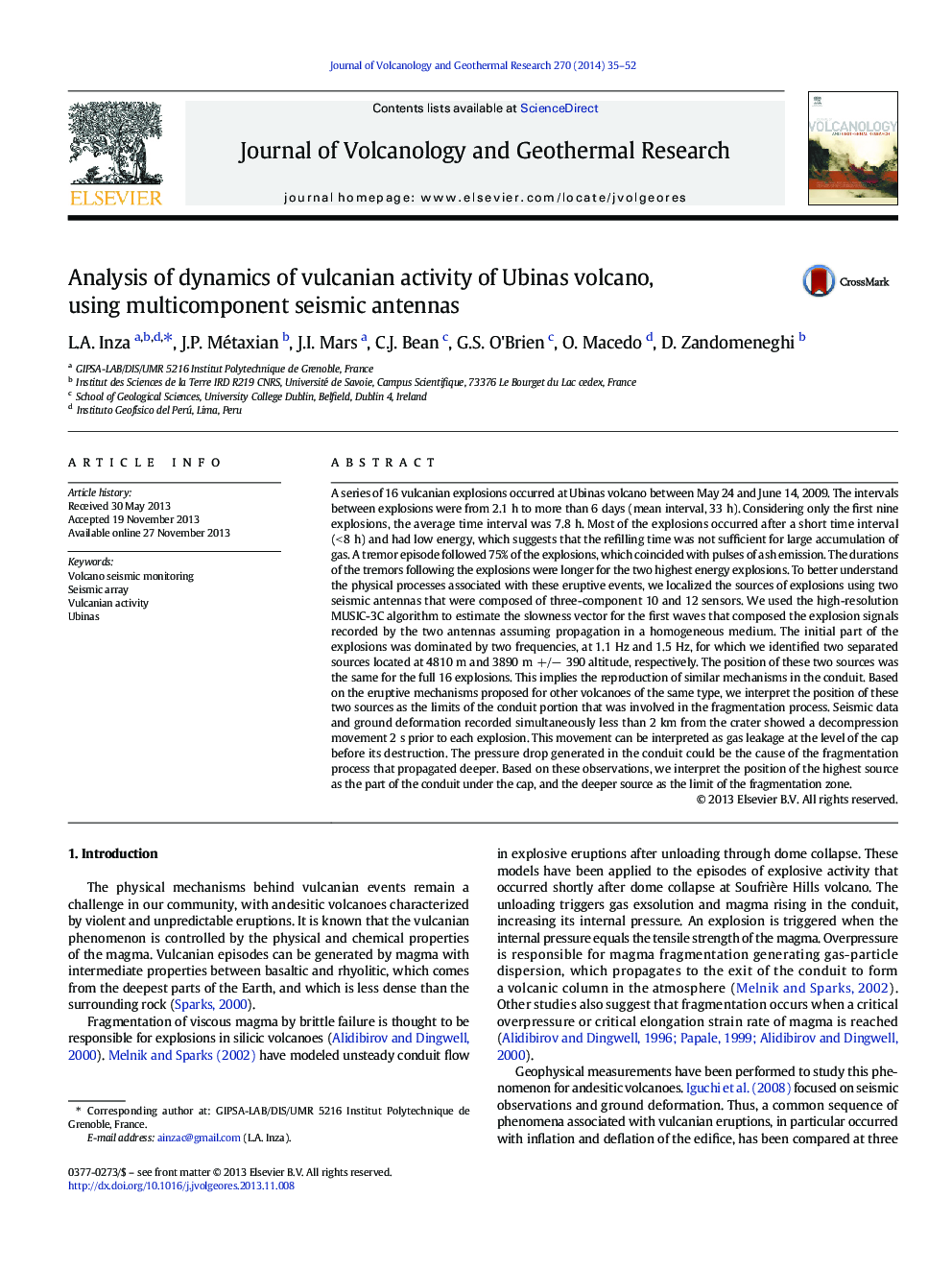| کد مقاله | کد نشریه | سال انتشار | مقاله انگلیسی | نسخه تمام متن |
|---|---|---|---|---|
| 4712458 | 1638351 | 2014 | 18 صفحه PDF | دانلود رایگان |

• We localize seismic sources associated to vulcanian eruptions by using two seismic arrays.
• We identify two seismic sources by analyzing earthquake signal onsets from explosions.
• We perform the source localization details by using the MUSIC-3C method.
• Tiltmeter data is analyzed for an explosion at Ubinas volcano.
A series of 16 vulcanian explosions occurred at Ubinas volcano between May 24 and June 14, 2009. The intervals between explosions were from 2.1 h to more than 6 days (mean interval, 33 h). Considering only the first nine explosions, the average time interval was 7.8 h. Most of the explosions occurred after a short time interval (< 8 h) and had low energy, which suggests that the refilling time was not sufficient for large accumulation of gas. A tremor episode followed 75% of the explosions, which coincided with pulses of ash emission. The durations of the tremors following the explosions were longer for the two highest energy explosions. To better understand the physical processes associated with these eruptive events, we localized the sources of explosions using two seismic antennas that were composed of three-component 10 and 12 sensors. We used the high-resolution MUSIC-3C algorithm to estimate the slowness vector for the first waves that composed the explosion signals recorded by the two antennas assuming propagation in a homogeneous medium. The initial part of the explosions was dominated by two frequencies, at 1.1 Hz and 1.5 Hz, for which we identified two separated sources located at 4810 m and 3890 m +/− 390 altitude, respectively. The position of these two sources was the same for the full 16 explosions. This implies the reproduction of similar mechanisms in the conduit. Based on the eruptive mechanisms proposed for other volcanoes of the same type, we interpret the position of these two sources as the limits of the conduit portion that was involved in the fragmentation process. Seismic data and ground deformation recorded simultaneously less than 2 km from the crater showed a decompression movement 2 s prior to each explosion. This movement can be interpreted as gas leakage at the level of the cap before its destruction. The pressure drop generated in the conduit could be the cause of the fragmentation process that propagated deeper. Based on these observations, we interpret the position of the highest source as the part of the conduit under the cap, and the deeper source as the limit of the fragmentation zone.
Journal: Journal of Volcanology and Geothermal Research - Volume 270, 15 January 2014, Pages 35–52